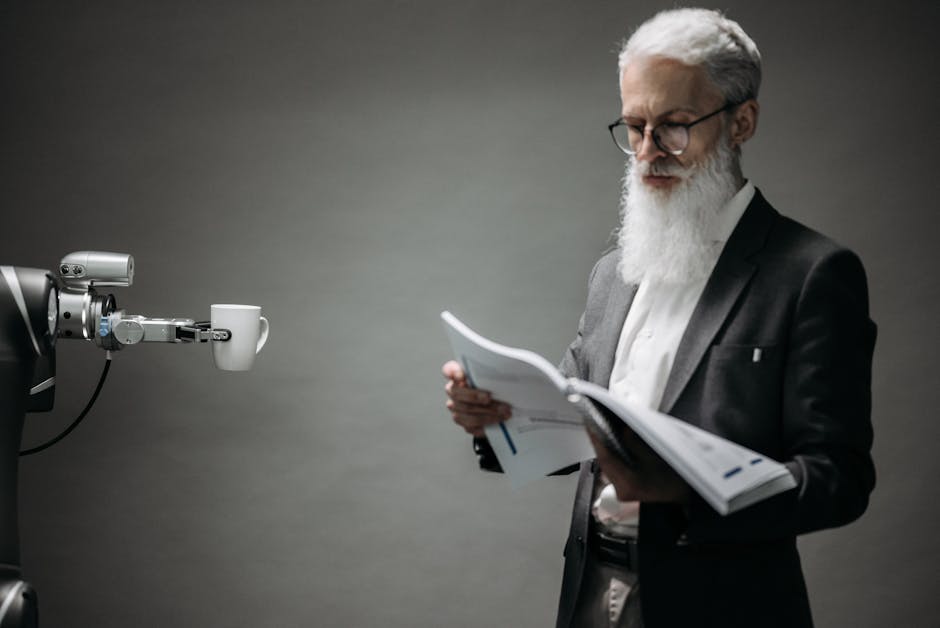No products in the cart.
Reimagining Work: The Rise of AI in Office Design
AI is reshaping office design, creating smart workspaces that enhance productivity and employee well-being. Discover the impact on architecture and HR.
Imagine walking into an office designed not just for aesthetics, but for optimal productivity. A place where the walls seem to breathe, adapting to your needs, while the layout intuitively guides you toward collaboration. This is not a scene from a futuristic movie; it’s the reality of AI-driven office design.
As organizations increasingly prioritize employee well-being and productivity, they are turning to artificial intelligence to help shape their work environments. The interplay between technology, architecture, and human resources is creating smart workspaces that are as functional as they are inviting. But what exactly does this mean for the future of work?

In the past, office design often revolved around aesthetics and branding. Companies splurged on stylish furniture and impressive lobbies, hoping to impress clients and potential hires. However, recent studies reveal that a well-designed workspace is integral to enhancing employee satisfaction and productivity. According to a report from the World Economic Forum, organizations that prioritize workspace design see a 20% increase in employee productivity and a significant reduction in turnover rates[1].
This shift is not merely cosmetic. AI technologies are now harnessing data to inform design decisions. For example, algorithms can analyze how employees interact with their workspace, identifying patterns that indicate how different setups affect productivity. This data-driven approach allows companies to create flexible spaces that can be reconfigured according to the specific needs of teams. Such adaptability is crucial in today’s fast-paced, ever-changing work environment.
The Role of AI in Office Design
AI’s role in office design extends beyond mere analytics. Imagine a workspace where lighting adjusts automatically based on the time of day, and air quality is monitored to ensure optimal comfort. This is the promise of smart office technology, where systems learn from user behavior and environmental factors to create a space that actively supports productivity and well-being.
Such adaptability is crucial in today’s fast-paced, ever-changing work environment.
Take the example of tech giant Google, which has integrated AI into its office spaces to create environments that foster creativity and collaboration. Their offices are equipped with sensors that adjust lighting and temperature based on occupancy and time of day, creating a more comfortable and productive environment for employees. This kind of innovative design is not just about comfort; it’s about creating a culture that values employee input and well-being.
Moreover, the integration of AI in office design has profound implications for human resources. As HR departments adapt to these new technologies, they must also consider how to foster a culture of innovation and adaptability within their teams. Training programs that emphasize agile thinking and collaboration are becoming increasingly important as companies embrace these new work environments.

A Collaborative Future
While the benefits of AI in office design are clear, there are also challenges that organizations must navigate. Concerns about privacy and data security are paramount, as employees may feel uneasy knowing their movements and preferences are being tracked. Companies must be transparent about how they collect and use data, ensuring that employees feel secure and valued in their workspaces.
Furthermore, as workplaces evolve, the traditional roles of architects and designers are also changing. The rise of AI has led to a greater emphasis on collaboration between technology experts and design professionals. Architects are now required to work alongside data scientists and IT specialists to create spaces that are not only visually appealing but also technologically advanced. This multidisciplinary approach fosters innovation and creativity in office design.
For young professionals entering the workforce, this new landscape presents both opportunities and challenges. As the demand for tech-savvy architects and HR professionals grows, so too does the need for training programs that integrate technology with traditional design principles. Educational institutions must adapt their curricula to prepare students for this evolving field.
Looking Ahead: The Future of Workspaces
As we look to the future, the potential of AI in office design seems limitless. The concept of a smart office is no longer a luxury but a necessity for organizations that want to remain competitive. Companies that embrace this shift will not only attract top talent but also cultivate a culture of innovation and collaboration.
Educational institutions must adapt their curricula to prepare students for this evolving field.
In a world where remote work is becoming increasingly common, the challenge lies in creating spaces that draw employees back to the office, providing them with a compelling reason to collaborate in person. AI-driven office design can bridge this gap, offering an environment that enhances both productivity and employee satisfaction.
As we move forward, it’s essential that organizations not only invest in technology but also prioritize the human element of design. The most successful workplaces will be those that blend technology with empathy, creating environments that inspire creativity and connection.
After all, a workspace is more than just a place to work; it’s a reflection of a company’s values and culture. As we continue to reimagine work, let’s embrace the potential of AI to create spaces that not only support productivity but also nurture the human spirit.











